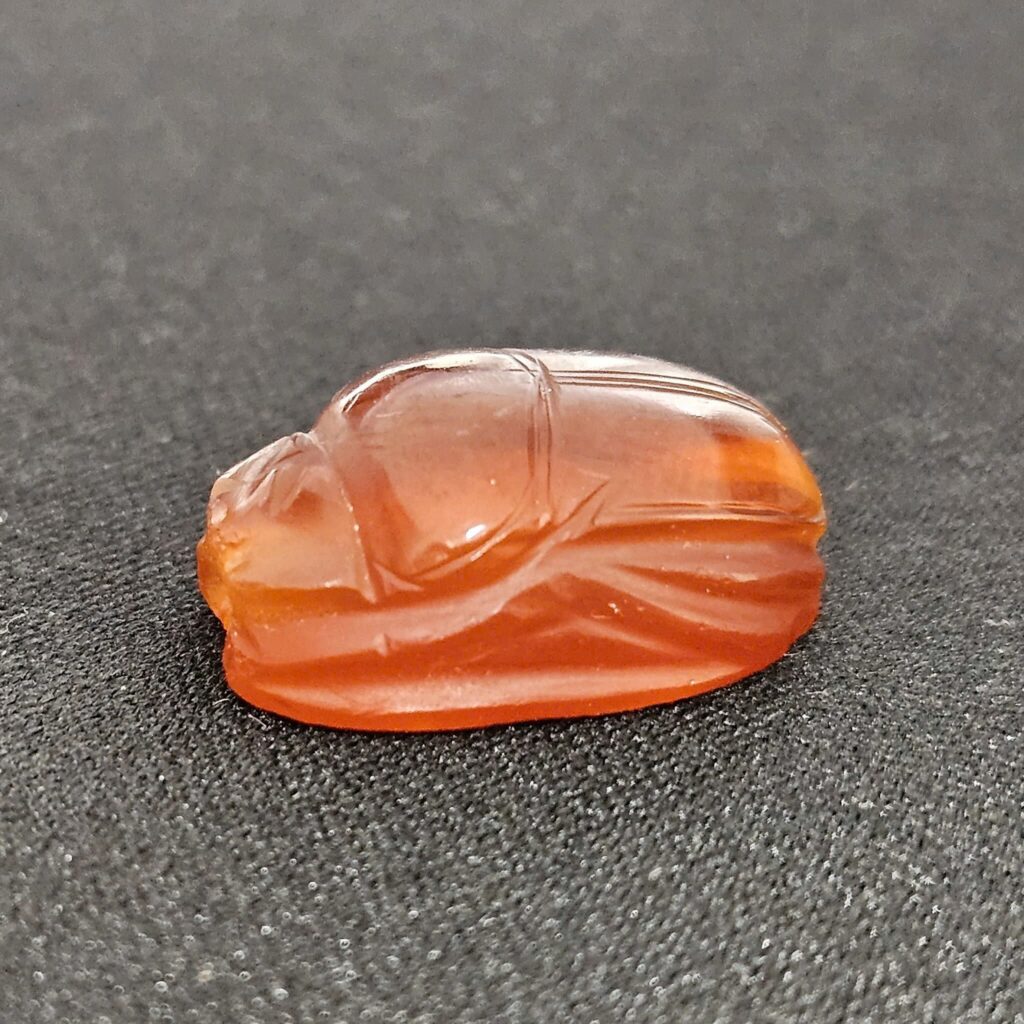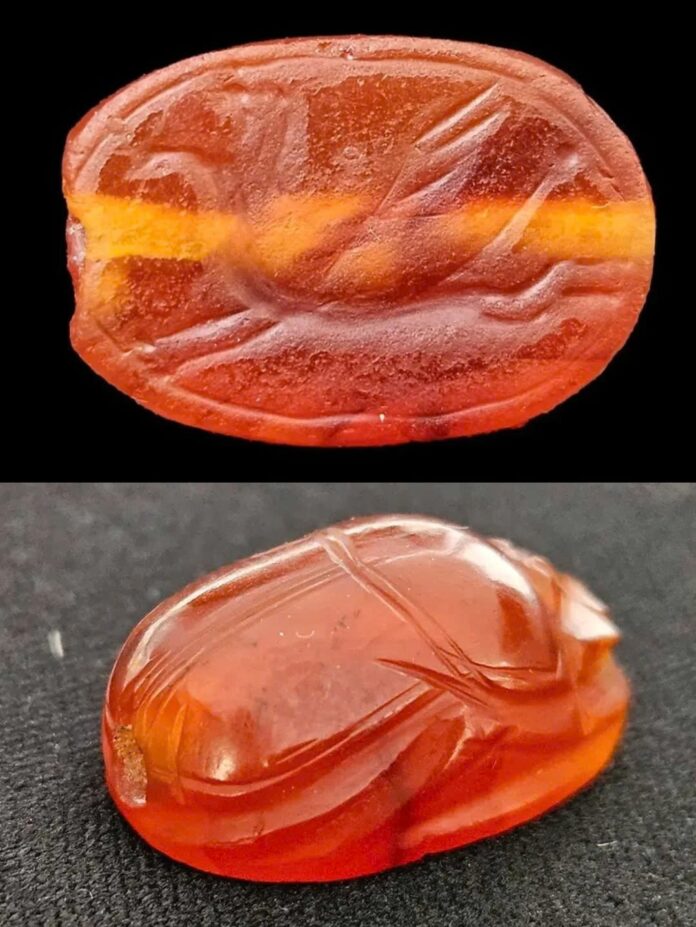Hiker’s Keen Eye Uncovers 2,800-Year-Old Artifact in Tabor Nature Reserve

In a remarkable find that bridges ancient history with the present, a rare Assyrian scarab seal-amulet dating back to the First Temple period has been discovered in northern Israel’s Tabor Nature Reserve. This chance encounter with the past offers archaeologists a tantalizing glimpse into the region’s rich historical tapestry.
An Unexpected Discovery

Erez Abrahamov, a 45-year-old hiker from Paduel, stumbled upon the ancient artifact near the base of Tel Rekhesh, a site associated with the biblical city of Anaharath mentioned in the Book of Joshua. Initially mistaking it for an ordinary stone, Abrahamov’s curiosity was piqued when he noticed intricate engravings on its surface.
“At first, I thought it was just a stone,” Abrahamov recounted. “But when I picked it up, I could see it was engraved.” Realizing the potential significance of his find, he promptly contacted the Israel Antiquities Authority (IAA).
A Tiny Treasure with Enormous Significance

The scarab, crafted from reddish-brown carnelian stone and roughly the size of a fingernail, is a masterpiece of ancient artistry. One side features a beetle, while the other is adorned with an intricate engraving of a griffin or winged horse – a style characteristic of Assyrian and Babylonian civilizations.
Dr. Itzik Paz, the archaeologist who excavated Tel Rekhesh, hailed the scarab as “one of the most significant seals discovered here.” He emphasized its potential to illuminate the Assyrian presence at this strategically important site.
Unraveling Ancient Administration
While scarabs held spiritual significance in Egyptian culture, symbolizing renewal and rebirth, they also served practical purposes. High-ranking officials often used them as administrative seals, making this discovery particularly intriguing.

The presence of this Assyrian or Babylonian artifact in Israel’s Lower Galilee region suggests that officials from these empires were active at Tel Rekhesh during the period of Assyrian rule. This tiny seal could provide valuable insights into the administrative structures and foreign influences present in the region nearly three millennia ago.
Preserving the Past for Future Generations

In accordance with Israeli law, Abrahamov transferred the rare find to the IAA, receiving a certificate of appreciation for his responsible actions. This collaboration between citizens and archaeological authorities ensures that such priceless artifacts are properly studied and preserved.
As researchers continue to examine this miniature time capsule, it promises to shed new light on a pivotal period in the region’s history. The scarab seal stands as a testament to the enduring allure of the past and the unexpected ways in which it can resurface in our modern world.

